PP1 documentation + reflection
Posted: September 10, 2022 Filed under: Uncategorized Leave a comment »I took this project as an opportunity to experiment with what I learned about the program so far and also scratch more surfaces with what can be done in Isadora in order to inspire future projects. I used shapes, blend modes, and various actors to alter their states and my starting point and visual goal was creating a sequence of events that will make the shapes get more chaotic gradually.
I liked that I got to play with using Isadora’s features to create a sense of texture from flat 2D shapes. Initially, I was going to start with a 3D model but I had trouble getting it to appear in Isadora, so one of my next steps will be to watch the guru session on 3D. I didn’t have a strong conceptual idea in mind when I started working on this project as I mainly wanted to experiment with the program while trying to create a surprise and laughter factor, so when I liked where the first scene was headed, I took it up from there for the future scenes where I focused on creating surprises in the intensity of the visuals and also inserting live capture interactions in one of the scenes after learning about that in class.
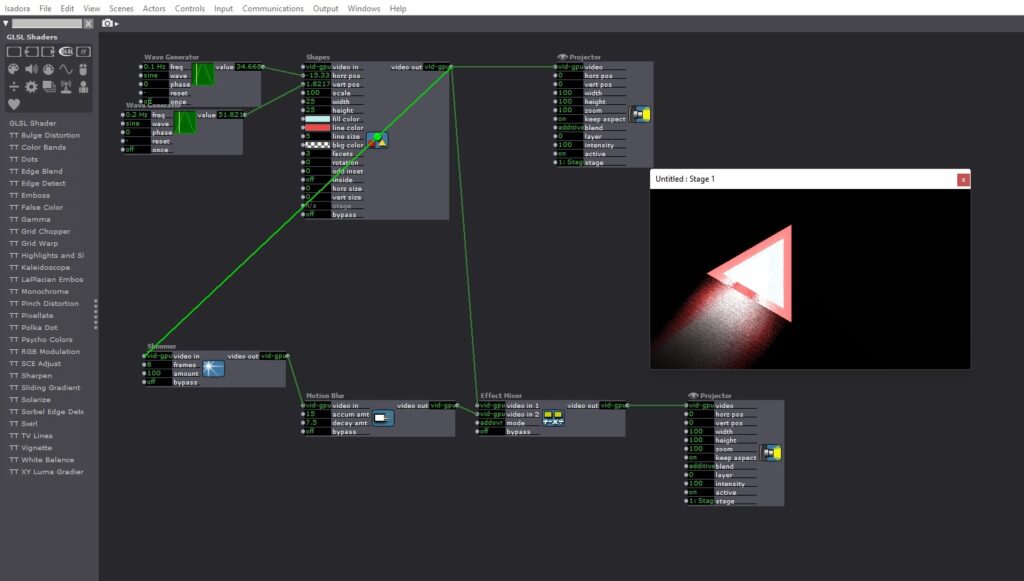
It is hard for me not to focus on the visual aspect even though I knew that art wouldn’t be judged, so it was very good to hear that some viewers found it mesmerizing to look at.
I wanted to take a funny twist on the randomness of the patch so I decided to throw in what I thought were pretty random emojis and make them small (I wish I made them even smaller) so they motivate the people to come closer and start a discourse on their role, and also hopefully laugh. I was glad that both of those happened in critique! It was interesting to listen to what everyone thought was the meaning behind them and also make their own meanings of them, although the emojis were just random.
During the critique I was disappointed that people didn’t realize they can control the movement of one of the shapes but it totally made sense why, and I think very good feedback is to put the scene with small emojis before that one so that viewers are already drawn to be closer to the screen and then after that it’s easier to realize they can interact with the content in the following scene.
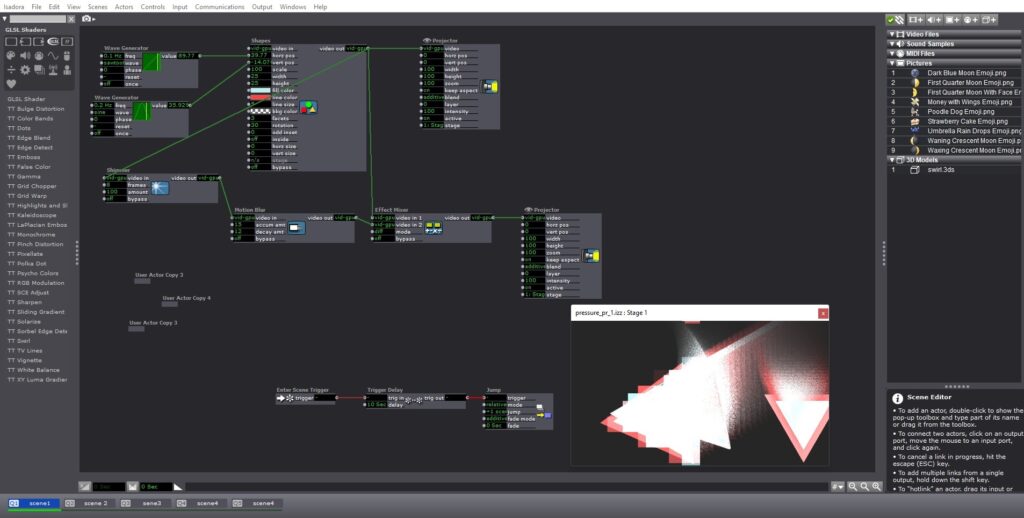
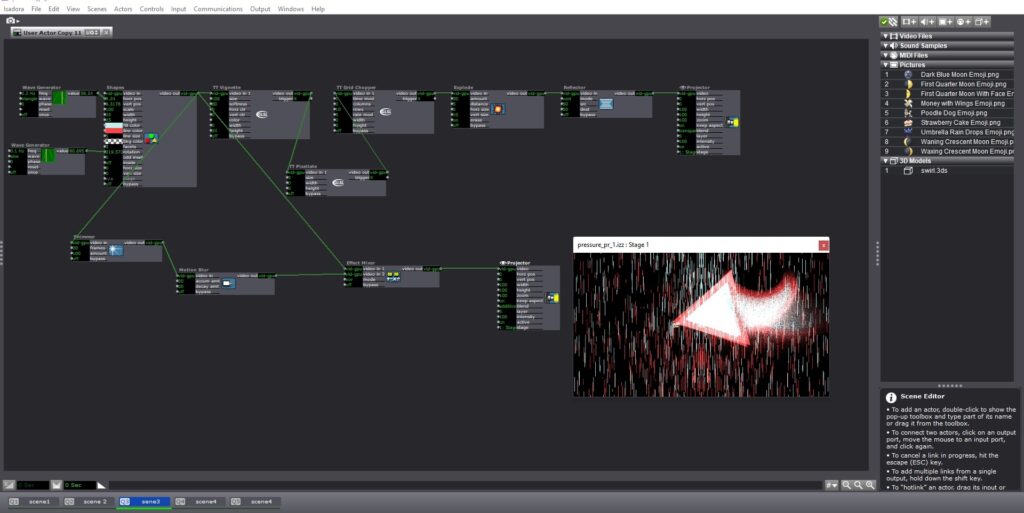

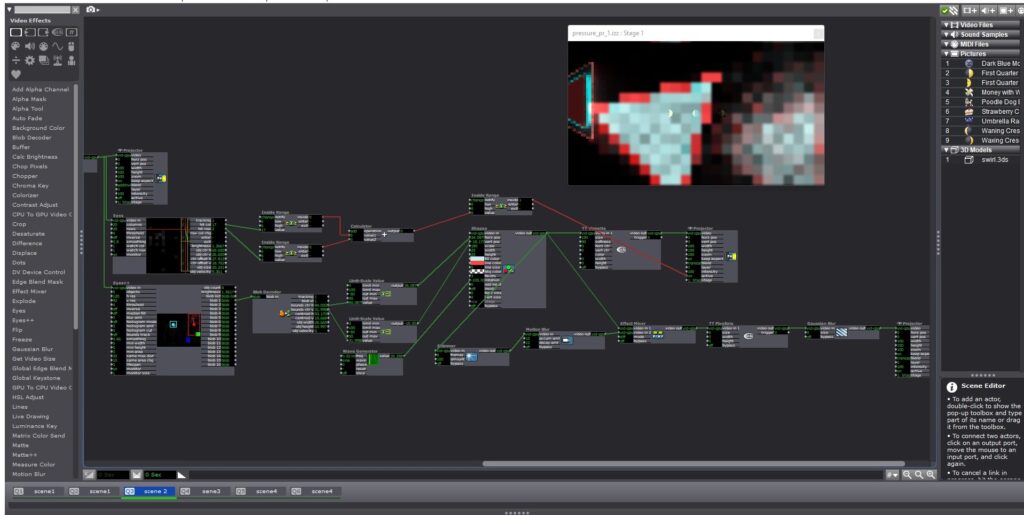
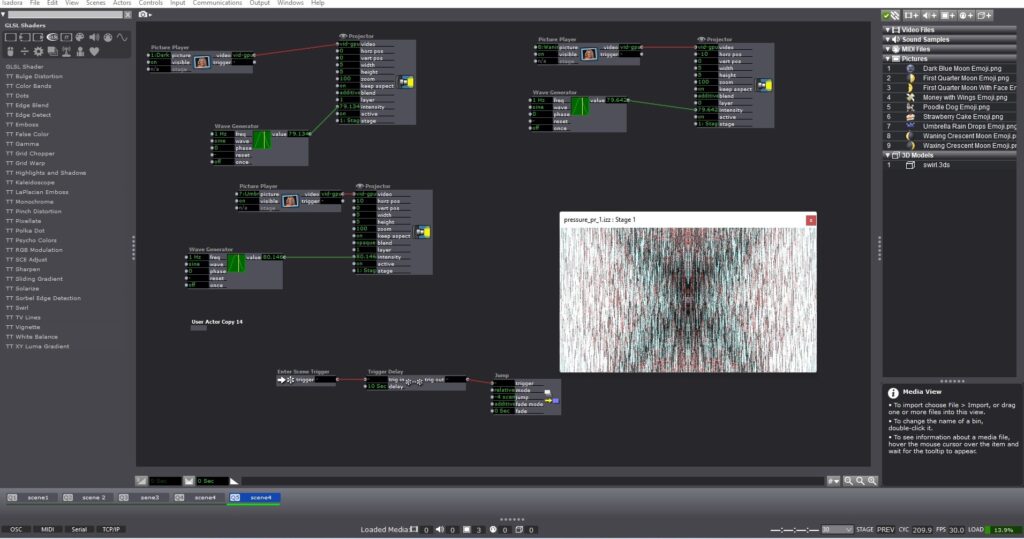
My presentation was also a good learning opportunity because while making this project I considered the first scene the beginning of the experience and the last scene the end, and I was expecting everyone to judge what they experienced from ‘beginning’ to ‘end’. But for the sake of critique, I put it on loop and that altered how everyone experienced it because a repeating pattern could be recognized. So, that was beneficial or me to observe since that one simple decision made an impact on how everyone experienced the project even though I had my own expectations of ‘beginning’ and ‘end’ to it.
Overall I am really satisfied with the experimentation in Isadora and I feel more confident trying out new things with it and I’m excited about what I could do with future projects.